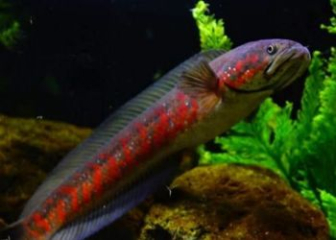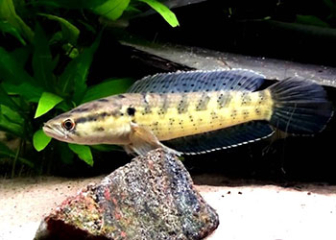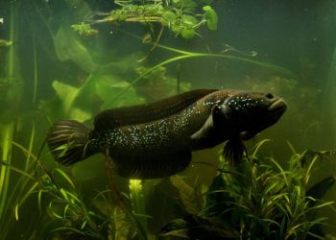Chana baramensis, a snakehead fish endemic to Borneo (now Brunei and Malaysia), has wild, original colors and is not commonly found in the market.
Chana baramensis , a wild snakehead endemic to Borneo, is small in size, wild in color, and has a calm predatory temperament. Although it is not as popular as other ornamental snakeheads, it is of great value to those who like to hunt for purebred, original fish.
To better understand this fish, let's learn more about ornamental snakehead fish in the article shared below.
Information about snakehead fish Chana baramensis :
| Scientific name |
Channa baramensis |
| Source |
Borneo (Sarawak, Brunei, Kalimantan) |
| Size |
Average 15 - 20 cm in adult fish |
| Temperament |
Territorial, solitary, slightly aggressive |
Origin of snakehead fish Chana baramensis
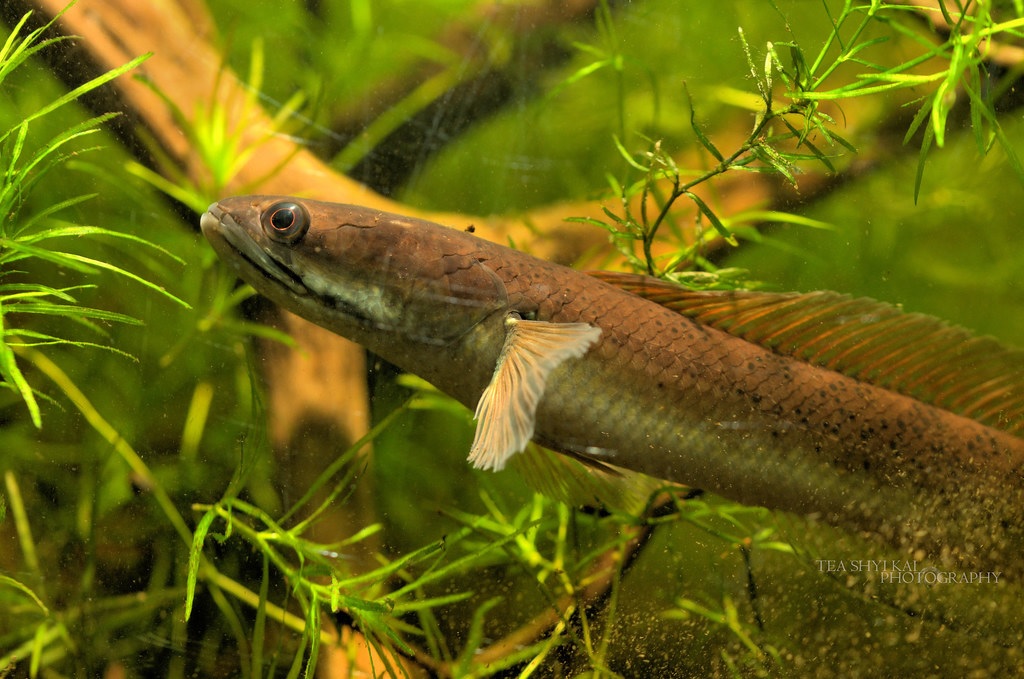
A Chana baramensis fish hiding among aquatic plants.
Snakehead fish Chana baramensis is an endemic fish species distributed only on Borneo island, specifically in the following areas:
- Sarawak State - Malaysia, in the Baram River basin
- Brunei Darussalam
They only appear in a narrow ecological area, not as widespread as many other snakehead fish species. The natural habitat of this fish species is mainly streams, ditches, and small streams in tropical forests, where there is a weak flow, many layers of rotten leaves, tree roots, and blackwater environment.
Currently, Chana baramensis is considered a fish of high ecological value because its endemic habitat is being narrowed by deforestation, logging, and indiscriminate fishing and trade.
Appearance of snakehead fish Chana baramensis
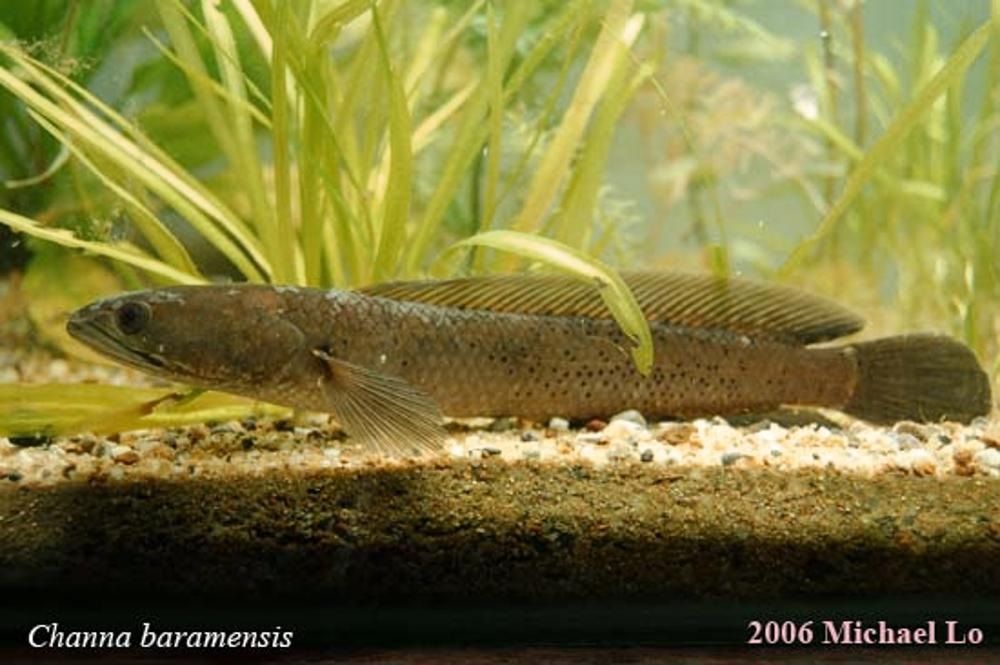
Wild appearance of Chana baramensis fish.
Chana baramensis is one of the small snakehead fish species and has an impressive appearance. Let's find out the details below to see if they stand out from other fish in the snakehead family.
- Size : Maximum 10 - 15 cm
- Body : Elongated, flattened on both sides, typical shape of snakehead fish family
- Head : Slightly flat, but rounder than larger snakehead fish, head has darker color than body, around eyes and gills have light colored edges.
- Mouth : Wide, protruding lower jaw, small, sharp, pointed teeth.
- Eyes : Large, bright, very active, with red-orange or pale yellow rims.
- Color : The body has a dark brown or light brown olive background color, with the ability to change color slightly depending on the environment and state. The fins often have black, dark brown or sometimes light blue edges.
- Pattern : The body has many light blue and turquoise round spots scattered on the body and fins, so it is sometimes called blue-spotted snakehead fish. These spots also have the ability to glow slightly under light.
- Dorsal fin : Long, extending from mid-back to near tail.
- Anal fin : Same length as dorsal fin
- Caudal fin : Slightly rounded
- Pectoral fins : Broad, flexible and powerful
Snakehead fish Chana baramensis behavior
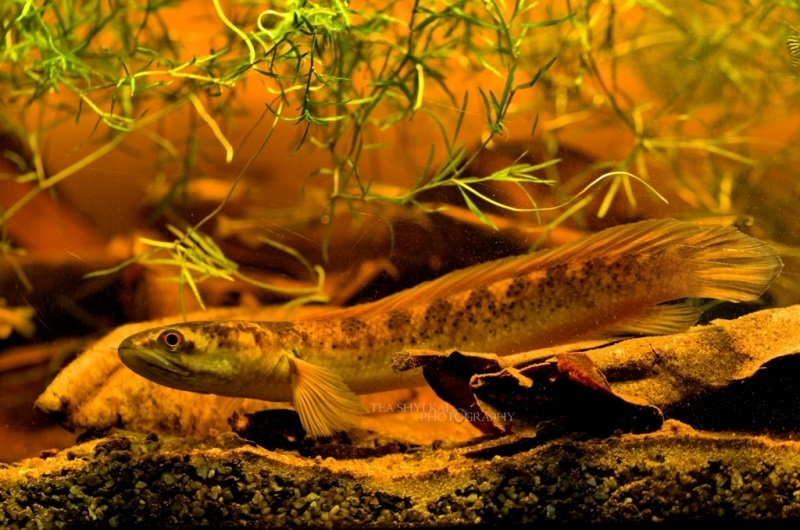
Chana baramensis fish prefer to live alone.
Let's find out if Chana baramensis has any more interesting habits and behaviors than other snakehead fish!
Likes to live in dark and acidic water environment
In nature, Chana baramensis prefers to live in swampy environments, freshwater, blackwater swamps with low pH, little light and lots of rotten leaves, thick mud bottom.
Highly territorial, prefers to live alone
Chana baramensis are highly territorial, they always occupy a separate area for themselves and show aggressive attitude towards other fish that want to invade, especially fish of the same species.
It is best to keep them individually or in pairs if they have been introduced to each other before and if the tank is large enough with plenty of hiding places.
Ambush hunting
Chana baramensis is a carnivorous fish, they hunt by ambush then rush out to strike quickly and quickly in the blink of an eye. They also do not chase their prey for long, just lie in hiding waiting for the prey to pass by and then strike suddenly. During the day, they usually hunt in the late afternoon and late at night, this is the typical nocturnal predator behavior of the snakehead family.
Good adaptability
Thanks to the accessory respiratory organ, Chana baramensis has the ability to take oxygen directly from the air, which helps them survive in oxygen-deficient environments or stagnant water, helping the fish adapt better to their living environment.
Some special behaviors
In addition to the above mentioned habits, Chana baramensis also has some interesting behaviors, different from other fish in the family such as the ability to defend itself by pretending to be dead when caught on land or in danger. In addition, this fish species is also capable of moving on land thanks to its ability to keep warm and breathe air.
Detailed guide to raising snakehead fish Chana baramensis for beginners
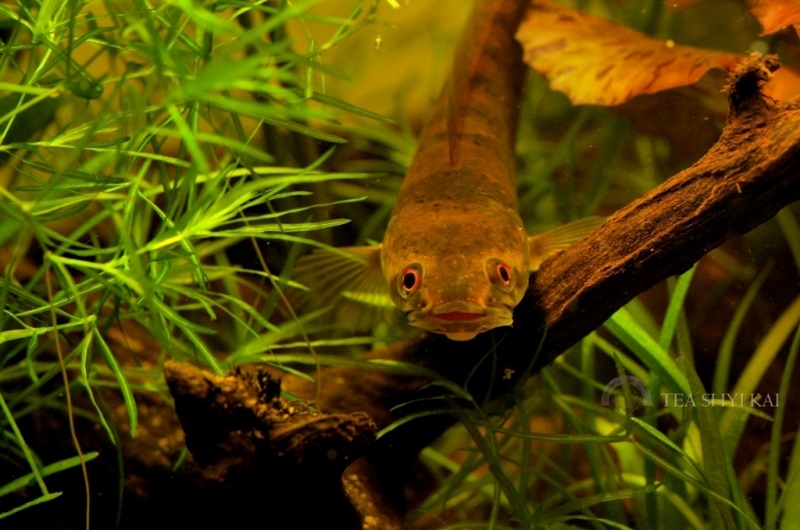
Frontal view of a Chana baramensis fish.
Right below is the most detailed guide on how to raise Chana baramensis snakehead fish for beginners. If you want to try your hand at this fish, check it out now.
Preparing the tank for Chana baramensis
In order for Chana baramensis to adapt and thrive in captivity, you need to design an aquarium that has similarities to the habitat of this fish species on Borneo Island, specifically as follows:
- Size : 60 x 30 x 30 cm if keeping 1 individual, ideal from 90 x 45 x 45 cm if keeping in pairs
- Decoration : Use lots of roots, driftwood, and rock caves to create shelter for fish, add lots of dry leaves like almond leaves to create a black water environment, creating a natural feeling. The bottom of the tank should be lined with a layer of small gravel for easy cleaning.
- Tank Cover : Tank covers are required as they are likely to jump out of the tank.
- Filtration system : Use a low flow filter to maintain water quality while providing comfort for the fish.
- Aeration : Should use a light capacity type to provide enough dissolved oxygen for fish.
- LED lights : Use low-light lights, avoid strong light shining directly into the tank because it can easily stress the fish.
Ideal water parameters for Chana baramensis
In addition to providing a suitable tank space, you need to pay attention to the water quality in the tank. For Chana baramensis to grow to its maximum and live long, you need to meet the following basic water parameters:
- Temperature : 24 - 28 degrees Celsius
- pH : 4.0 - 6.5
- Hardness : From soft to neutral
- Dissolved oxygen : Medium - low because fish can breathe air.
Suitable diet for Chana baramensis
As shared above, Chana baramensis is a carnivorous species with high hunting habits, so when keeping them in a tank, you should feed them the following foods.
- Live foods such as baby fish, small shrimp, bloodworms, earthworms and even small insects
- Frozen food or pellets are for predatory fish, however they need to be introduced from a young age as fish may reject these foods.
Note :
- Be careful when feeding live bait fish because of the potential for disease transmission.
- Do not overfeed fish to avoid excess food polluting the water in the tank.
Health care, disease prevention for Chana baramensis fish
If you want to raise Chana baramensis for a long time, you need to pay attention to their health care and disease prevention, because this fish species likes to live in a black water environment that has many potential risks of causing disease. Let's find out the details below.
Principles of disease prevention :
- Maintain a stable living environment, check water parameters regularly.
- Provide a suitable, varied diet, do not overfeed fish.
- Add dried guava leaves to enhance mild antibacterial properties and stabilize pH.
- Create plenty of hiding places for fish to reduce stress
- Isolate new fish for 1 - 2 weeks before releasing them into the tank to avoid spreading pathogens.
- Observe fish behavior every day to detect unusual behavior early.
Common diseases in Chana baramensis and how to treat them :
| Disease name |
Reason |
Symptom |
How to handle and treat |
| White mushroom |
Due to dirty water
Because the fish has open wounds that allow bacteria to attack.
Fish are stressed
|
Fish have white cotton-like spots on body and fins
Fish stop eating, lethargic, like to lie on the bottom
|
Isolate sick fish
Bathe fish with methylene blue solution + diluted salt water
Increase temperature slightly to kill bacteria
|
| Fish with bloating |
Fish eat too much
Indigestible food
Intestinal infection
|
The fish's belly is abnormally swollen and the fish stops eating.
Slow swimming, loss of balance, lethargy
|
Stop feeding for 2 to 3 days
Change the tank water to ensure stable quality.
Add dried Indian almond leaves for stability
Feed fish extra garlic or digestive enzymes
|
| Parasite |
Due to waterborne parasites such as anchor worms and fish lice that cling to fins and gills |
Fish often rub themselves against the decorations in the tank.
Fish scales and skin peeling
Tired, lethargic fish
|
Bathe fish with diluted salt for 5 - 10 minutes for 4 - 5 consecutive days.
Use antiparasitic drugs
Use tweezers to remove parasites from the skin and fins.
|
Price of snakehead fish Chana baramensis
Currently, in the international aquarium market, Chana baramensis is considered a rare and difficult to find fish, so trading and selling them is very limited and there is no accurate information about its price, so we cannot provide the price of this fish.
If you are passionate about ornamental snakehead fish, you can try some other popular snakehead fish species with mid-range prices such as ice fire snakehead fish, queen snakehead fish, little emperor snakehead fish, etc.
Thus, above snakehead.info has shared details about the snakehead fish Chana baramensis, although it is an endemic fish species and not too popular, it still receives much attention from those who love ornamental snakehead fish because it possesses a wild, original appearance and interesting behaviors.
If you want to learn about other popular ornamental snakehead fish, please visit our Blog section to read more articles!




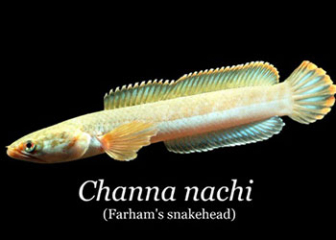
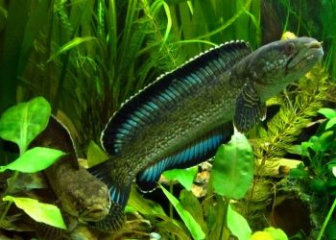

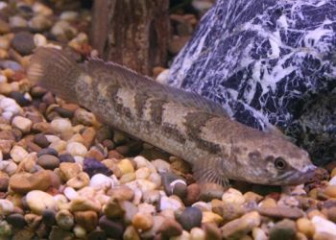
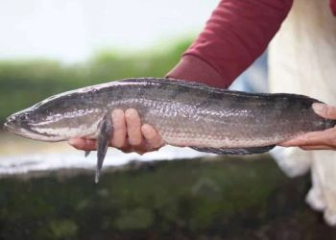
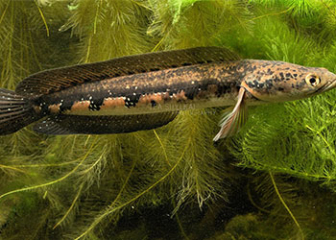

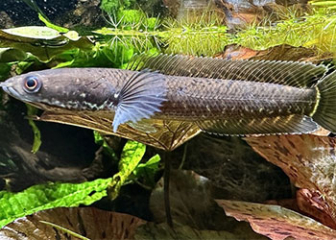
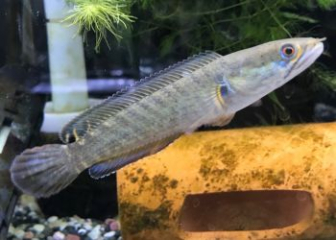
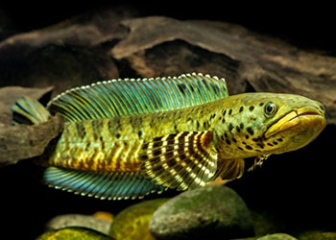
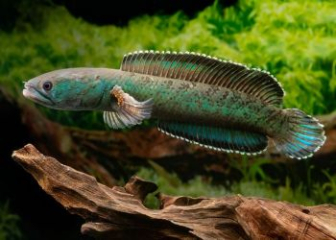

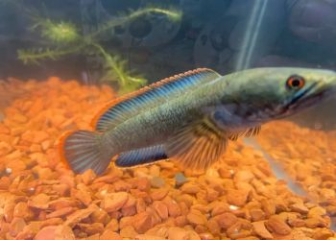
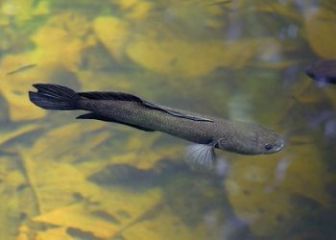
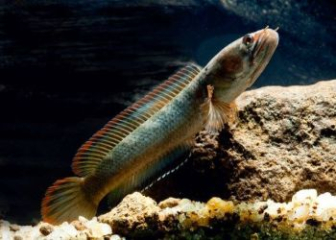
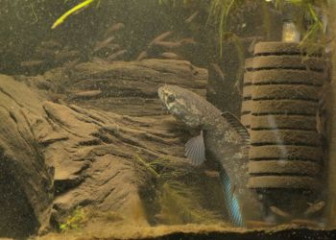
_350x250.jpg)
